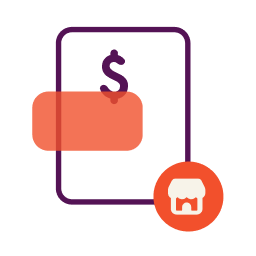Let’s say you own a ski shop that sells 200 skis per year. Next year you expect to sell 300. That’s a 50% increase! How are you going to cover the purchase of those extra skis? Who is going to sell/fit all those skis to your customers?
Many business owners opt to work with a business lender to finance growth rather than giving up some ownership of their company to an investor. But what would happen if, in our ski shop example, the owner already had a business loan he or she was working to pay back?
While it’s possible to take on multiple business loans or financing from multiple providers, it presents a few obstacles. Here’s a few scenarios you might want to know about before you get yourself into them.
Scenario 1: I have an existing loan for which I put up collateral and am seeking to supplement with more financing.
Not all lenders are the same, but oftentimes a lender will ask you to put up collateral when they agree to finance your business. When they do, they’ll put a UCC-1 filing on your business, a public record that may show up on your business credit reports. (You can see your personal and business credit profiles for free on Nav.)
A UCC-1 filing is a notice to other lenders, vendors, suppliers and anyone who might look at your business credit report, that a lender already has the first right to seize the asset(s) you’ve used as collateral in the event that you default. You may have used your commercial property, equipment or inventory as collateral, or the lender may have filed a blanket lien against all of your assets. In other words, the lender has first dibs on some or all of your assets if you default.
This means that any other lender that lends you money and asks you to put up collateral would get the first lender’s leftovers (if there are any) in the case that you default. Secondary lenders may decline to finance your business because of this.
Scenario 2: I have existing financing for which I didn’t put up collateral and am seeking a loan to supplement the financing.
Some business financing options don’t require collateral. Options like merchant cash advances, cash flow loans, and some short-term alternative loans fall under this bucket. These options may, however, require a personal guarantee from the proprietor of the business.
Most lenders will not lend to a business that has multiple short-term financing loans, even if those options didn’t require collateral. These financing options usually come with a very high annual percentage rate, and multiple MCAs or cash flow loans are a sign of financial instability to most lenders — big red flag.
Let’s say you have one existing MCA that you personally guaranteed. If your business cash flow is consistent, you have a strong customer base, your personal and business credit are sound, and you have assets you can put up as collateral, your MCA might not matter to a lender — in the unlikely event of default, they can take the collateral you put up rather than depending on you to personally see that the debt is repaid.
Scenario 3: I finance my invoices using an invoice financing company and am seeking to supplement that with a loan.
The outcome of this will depend on the invoice financing provider. Some invoice financing providers may place a lien your assets to secure the financing. Bluevine, for example, is an invoice financing provider that places a general lien on your business assets, which could affect your chances of getting other funding or loans similar to the way it does in scenario 1.
Many invoice financing providers do not place a lien on your assets. Rather, it may be an unsecured form of credit, or the invoice financing company may purchase your outstanding invoices. Fundbox is an example of a lender that might do this.
If you’re not sure whether whether your financing is secured or unsecured, check with your invoice financing company. If you’re looking to finance your invoices, make sure you understand how the provider handles collateral and personal guarantees before you sign a term sheet.
Where to Start Your Search
If you have an existing business loan and a solid relationship with a loan provider you like, it’s worth talking to them about supplementing it with additional financing.
Nav customers can also take advantage of our financing options, which matches business owners to financing based on their credit and business data. Our expert team of credit and lending specialists helps business owners find refinancing options as well as options that financing providers that will work with you despite an existing loan—contact them here.
This article was originally written on March 16, 2017 and updated on September 9, 2022.



It’s both either/or and both/and. One can do unsecured/revenue based only, secured/collateral based, or both if one can fit them both in.